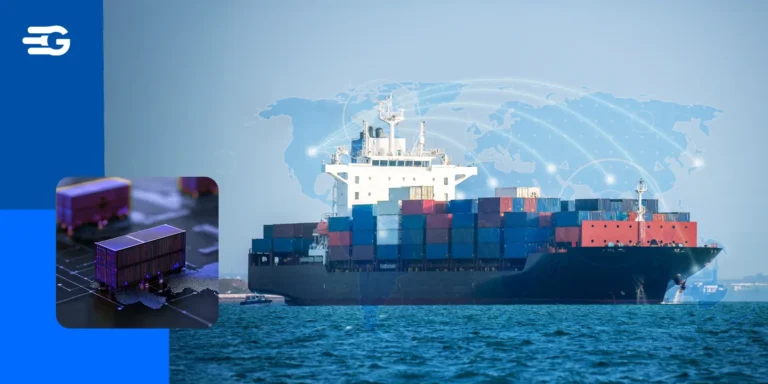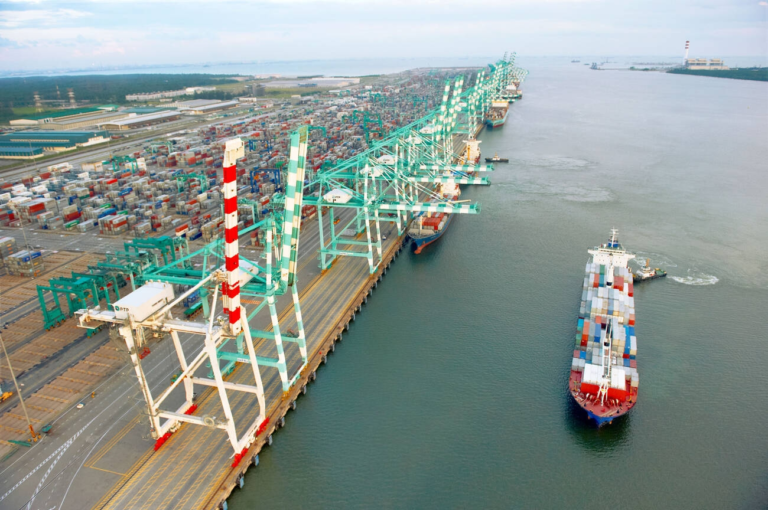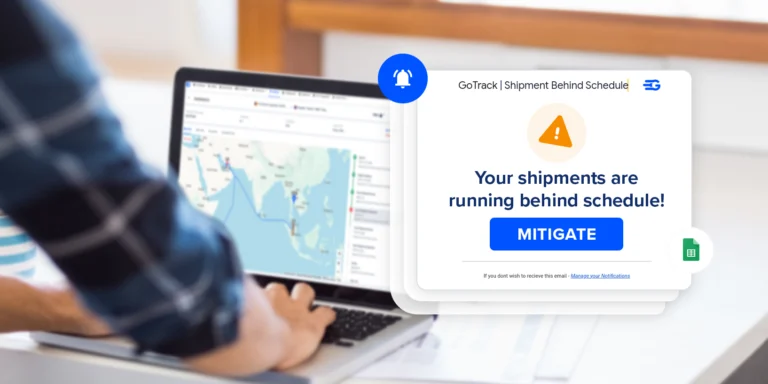Decentralized vs. Centralized Procurement Rate Process: What is Best for Your Business?
As a Customer Success Manager at GoComet, I’ve had the privilege of working with over 50+ clients in digitizing their Freight Negotiation process through the GoProcure module. This journey included collaboration with diverse industries, such as top pharmaceutical companies, chemical manufacturers, and automobile giants, each with its unique global footprint. What I have learned over the years is that an effective freight rate procurement process is the cornerstone of successful logistics management, offering a strategic approach to cost control, service quality, risk management, and overall supply chain efficiency. With this article let’s dive deeper into how big Enterprise companies, choose which model will work for them, Decentralized or Centralized, Also take a look at how few companies have successfully implemented the hybrid model of Freight rate procurement.
The Divergence: Centralized vs. Decentralized Procurement
In the quest for digitalizing Freight rate procurement, I encountered two prevalent methodologies – Centralized and Decentralized Procurement. The former involves a singular, central entity conducting negotiations for all regions, while the latter grants each location the autonomy to choose its Logistics Service Providers (LSPs).
Understanding Centralized Procurement
In a centralized procurement process, negotiation power resides with the central freight procurement team. All regional offices submit their freight requirements, including Points of Loading/Points of Delivery (POL/POD), expected volume, detention/demurrage specifics, and expected transit time. The central team validates these requirements, initiates negotiations with large LSPs, and finalizes rates and providers.
Success Factors for Centralized Freight Rate Procurement
- Selection of participating LSPs: For centralized procurement, the supplier should be a multinational company, as their office needs to be in multiple locations so that they can handle the shipments from all the locations.
- The expected volume should be known by the team, as the volume of shipment is going to be a major criterion on which negotiation will be done with the shipping line/LSP.
- You should have strong SOPs for all the participating LSPs, and the requirements should be communicated, like Detention Free time, Transit time, rate validity, and routing, for Apples to Apple comparison. Because after investing so much time and effort you do not want to have any hidden cost
- Last but not least Central Freight Procurement works best with the long-term contract rates of at least 6 months or for a year, as it is a time-consuming process.
But that again depends on the market conditions and logistics disruptions.
Advantages of Centralized Procurement
- Economies of scale – Promising huge volumes to logistics service providers will lead to better negotiating power for the central team
- Streamlined processes – Consistency is maintained during the complete procurement process
- Since all the requirements are coming to one team and they are leading the negotiations, those who are specialized will have a cost advantage
- Standardized Contracts: Centralized procurement often involves the creation and management of standardized contracts, reducing the risk of misunderstandings and disputes with carriers.
I’ve observed several clients adeptly strategizing and implementing successful negotiations. One notable instance involved a client achieving a 10% reduction in freight costs for each shipment. The client, well-informed about the overall shipment volume, awarded additional business to a logistics service provider (LSP) at a slightly higher rate on extra lanes and negotiated very hard in the lanes where the volume was high. Leveraging their knowledge of the higher shipment volume, the client engaged in tough negotiations with the same LSP, securing rates even below the prevailing market rates.
Disadvantages of Centralized Procurement
- Less Regional Customization: Centralization might overlook specific regional nuances or preferences, making it challenging to customize freight procurement strategies according to the unique requirements of different geographical areas.
- Risk of LSP Dependency: Depending heavily on a limited number of key LSPs may expose the business to risks if these carriers face operational challenges, such as financial instability or service disruptions.
- Limited Flexibility: Centralized processes may struggle to adapt quickly to changing market conditions, potentially leading to suboptimal responses to fluctuations in demand, fuel prices, or geopolitical events.
With Red Sea disruption, the Panama Canal drought, congestions at ports, the Ukraine War, and many other events that have taken place in the recent past have made the client move from Centralized procurement to Decentralized procurement.
Exploring Decentralized Procurement
In the realm of decentralized procurement, each cost center or location assumes control over the negotiation and decision-making processes. Under this approach, every location operates with its distinct set of Logistics Service Providers (LSPs) along with specific terms and conditions.
To illustrate this, let’s consider a case involving a chemical company based in Singapore. This company maintained manufacturing units in India, China, and the USA, each producing different products with unique shipment handling requirements. Despite being part of the same corporate entity, the chemical company adopted a decentralized freight procurement strategy. This approach granted individual locations the flexibility to independently select LSPs based on their handling capabilities and service offerings.
Success Criteria For the Decentralized Freight Procurement Process
- Each Cost Centre should have strong negotiation skills and should be well-trained in the procurement process.
- The LSPs for each cost center should be specialized to handle the shipment according to client requirements.
- Cost Centers should establish comprehensive audits across all centers to ensure strict adherence to established processes.
Advantages of Decentralized Procurement
- Adaptability to Regional Needs: Enables customization of procurement strategies to address unique regional requirements and variations in supplier landscapes.
- Enhanced LSP Relationships: Local procurement teams can build stronger relationships with regional suppliers, fostering better collaboration and understanding of local market dynamics.
Disadvantages of Decentralized Procurement
- Dependent on Cost Centre/Team Members: One major disadvantage of decentralized procurement is that you are dependent on the team members and their competencies. From the above example of the Chemical company, when we started onboarding the client from all three regions India, China, and the USA, we observed that India and the USA were majorly dependent on one LSP, and Freight rate comparison was not done at all, which restricted the client from savings around 20 % of Freight cost.
- Limited Visibility and Control: Reduced visibility into overall procurement activities can hinder the organization’s ability to monitor spending, negotiate favorable terms, and implement strategic changes effectively.
Selecting the Appropriate Model for Your Business
Efficient procurement strategies play a pivotal role in shaping the success of logistics and shipping operations. In the dynamic landscape of supply chain management, making informed decisions about centralized or decentralized procurement can significantly impact cost savings, flexibility, and overall operational efficiency. I have tried to create a table that can help you to take key considerations for strategic procurement in shipping, outlined below
| Factors | Recommendations |
| Shipment Volume for a Specific Lane | High Volume with Fixed Recurring Business to Specific Lanes: Consider Centralized Procurement for streamlined negotiations and potential cost savingsLow Volume or Business with Volatility: Consider Decentralized Procurement for flexibility in adapting to changing circumstances |
| Product Type and Handling Process Variability | High Variability (Material Handling Criticality): Consider Decentralized Procurement for tailored solutions, especially when dealing with hazardous cargo, multiple HSN codes, and diverse handling requirements |
| Uniform Terms and Conditions for Handling Shipments Across Regions | Opt for Centralized Procurement for standardized processes and consistency. |
| Setting up Business or Shipping to New Lanes | Major Shipments on a Spot Basis: Consider Decentralized Procurement for agility in handling spot shipments and adapting to new lanes. |
Additional Considerations:
In the context of the challenges faced by the supply chain, particularly in international logistics amid events like the COVID-19 pandemic and the current Red Sea conflict, planning becomes more intricate for centralized procurement. Striking the right balance between centralized and decentralized approaches becomes crucial in navigating uncertainties and ensuring resilience in your procurement strategy.
The Role of Technology in Transforming Procurement
Technology and strategic partnerships in the realm of freight procurement are pivotal in driving efficiency and effectiveness.
In decentralized freight procurement processes, technology catalyzes by establishing a control tower for all logistics locations, granting management comprehensive visibility. Additionally, technology facilitates the implementation of process checks and enables the sharing of best practices between different locations.
Illustrating this with a Lubricant Company based in Europe, one logistics location within a decentralized procurement system ensured that freight bids were sent to at least 5 Logistics Service Providers (LSPs). Recognizing the need for consistency, the management engaged GoComet to customize the product. This customization mandated that, for each bid created, logistics teams must invite a minimum of 5 LSPs, fostering better decision-making.
In another instance, while collaborating with a client in a decentralized setup, we implemented an approval matrix for freight confirmation. This matrix stipulated that if a regional office confirmed a rate other than the lowest, the rate would be escalated to the head office for final approval.
In a centralized freight procurement process, having a robust technology system in place becomes indispensable. This technology not only saves significant time for the central team but also ensures smooth operations for all regional offices. The platform streamlines the collation of shipment requirements from various regions, invitation of top-tier LSPs, establishment of terms and conditions for all LSPs, compilation of freight rates, and meticulous comparison and negotiation processes. This not only requires the skills of a seasoned negotiator and logistics expert but also demands a meticulous approach.
The GoProcure module stands out as a comprehensive solution, providing a unified platform that efficiently manages these intricate tasks, ultimately saving substantial time for the teams involved. The single platform ensures seamless collaboration, transparency, and a streamlined approach to freight procurement.
Exploring the Hybrid Model: A Case Study
In adopting a hybrid model, One of the leading pharma companies from the US devised a strategic approach to optimize their freight procurement, combining the stability of fixed contracts with the flexibility of Spot.
The client strategically opted for a fixed contract of six months for lanes with consistent monthly shipment volumes. To maximize efficiency, they aggregated data from all regional offices, extending this consolidated information to include fixed business lanes for a comprehensive auction.
With the collated data, reputable Logistics Service Providers (LSPs) across various regions were informed about the centralized procurement opportunity. This initiative formed a pool of trustworthy and high-performing service providers, ready to cater to larger volumes of shipments.
The platform’s terms and conditions were meticulously configured, ensuring LSPs operated within precise parameters. Transit days, detention-free times, and specific shipping line preferences were pre-established according to the unique requirements of each lane.
The GoComet team facilitated comprehensive training for all participating LSPs, conducting a thorough dry run to ensure seamless execution. The auction process was remarkably swift, concluding within two days for all lanes. The outcome was highly competitive rates for the client.
This streamlined process, typically taking a month, was successfully compressed into a week, resulting in a time-saving of 75%. Leveraging GoComet’s Reverse Auction mechanism, the client achieved a remarkable 24% reduction in freight spending compared to the previous year.
Once the contracts were finalized, the same rates were seamlessly applied for the subsequent month. For smaller lanes, the regional team seamlessly utilized the GoSpot module (Decentralized Freight Rate Procurement) Encouragingly, the regional team proactively onboarded new LSPs for their shipments, extending invitations for six-month contracts based on performance, thereby fostering a mutually beneficial scenario for both the buyer and the supplier.
Conclusion: Continual Evaluation and Adaptation
Navigating freight procurement can feel like a delicate dance, crucial for business success. In my role as a Customer Success Manager at GoComet, I’ve witnessed firsthand the impact of different procurement approaches: centralized, decentralized, and hybrid model, which combines elements of both.
Imagine centralized procurement as highly organized but potentially lacking in local nuance, while decentralized procurement offers flexibility but may result in uneven performance. The hybrid model, however, strikes a balance between the two, delivering efficiency gains and cost reductions, as demonstrated in a recent case study with one of our clients.
Currently, the hybrid model is gaining popularity among our clients, offering a solution that addresses both organizational and operational needs. However, adopting a hybrid model introduces its own set of challenges, which technology can effectively mitigate.
Technology acts as the linchpin, providing clarity and streamlining operations regardless of whether you opt for centralized or decentralized approaches. When making freight procurement decisions, factors such as shipment volume, product diversity, and global dynamics must be considered.
Partnering with a dependable logistics service provider and finding the optimal balance between centralized and decentralized processes are crucial for success in the dynamic landscape of freight procurement.





